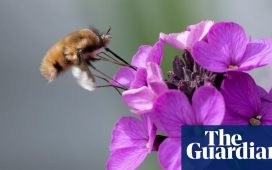The light was dazzling on Totley Moss, turning the myriad pools of standing water to quicksilver. But the afternoon sun was haloed with dark clouds and by the time I dropped off White Edge, sheets of stinging hail were driving across the moor. I sank gratefully into the magical embrace of Hay Wood, thick with its sheltering oaks and gentle mosses, to wait for the gale to pass.
Almost at once I spotted what I took to be a gigantic whitish dog, no more than 30 metres away, lurking in the trees. My heart took off, even if my feet didn’t. Then I reprocessed the data correctly to come up with a red deer hind, blanketed in hail, her damp black nose twitching in alarm. To my left I noticed a handful more hinds, which banked away into the gloom, while the one that had startled me darted off in the opposite direction.
Moments later, the sun was back, spearing through the twisted branches. Whatever hail had made it through the trees began dissolving into the wet ground beneath. Snatches of birdsong resumed: mostly tits, the cronk of a raven somewhere above Froggatt Edge, behind me the screech of a jay. I turned quickly – but too late.
Jays are a rich presence in my life, partly for their vocalisations. Their mimicry is famous: they do a brilliant tawny owl. But it’s their family chat I appreciate most; the soft exchange between individuals, the gentle clicks and hoots, the ties that bind. Their colouration is another obsession, in particular the electric blue of their coverts, once plundered by milliners, still beloved of fly-fishers. I usually have one pinned above my desk.

The brilliance of this colour has nothing to do with any sort of pigment. It’s a consequence of the nanostructure of their feathers, made from spongy keratin, like our fingernails and hair. By varying the size of microscopic holes in their surface, jays alter the way light hitting them is scattered and reflected, creating the rich bands of white, blue and indigo that are the hallmark of these light-tricksters. This effect extends into the ultraviolet spectrum, another of nature’s hidden thresholds the human mind cannot cross.






